Residents of luxury apartments in San Francisco are being hit with bills of up to $14,000 to fix the problem, despite work destroying their homes with raw sewage
Residents of the luxury Millennium Tower – dubbed the “Leaning Tower of San Francisco” – are being hit with bills of up to $14,000 to fix the building’s problems, including raw sewage in their sinks and pipes.
Homeowners and renters have been shocked to receive the bills, leaving residents to pay an estimated $6.8 million of the total $20 million in overages.
Mehrdad Mostafavi, owner of an apartment on the third floor of the building, recently received a bill for $14,000, which amounts to $10 per square meter of the apartment.
“It is a luxurious building and famous building, but unfortunately for me as an owner it is not like that,” Mostafavi said NBC Bay Area. “I’m really bothered.”
To make matters worse, Mostafavi was not living in the building when he received the bill because he was dealing with a sewage problem, believed to be caused by the tower’s tilt.
The Millennium Tower – designed by Gary Handel and Handel Architects – is still tilting at 29 inches, but the sinking has stopped after a stabilization project.
Residents of the luxury Millennium Tower – dubbed the ‘Leaning Tower of San Francisco’ – are being hit with bills of up to $14,000 to fix the building’s problems
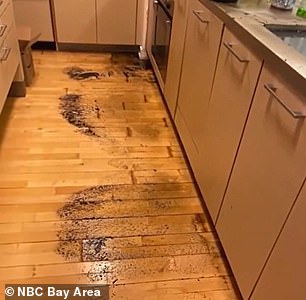
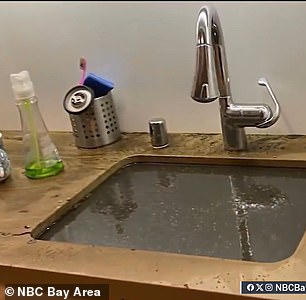
Excess sewage has caused damage and headaches in some residents’ apartments
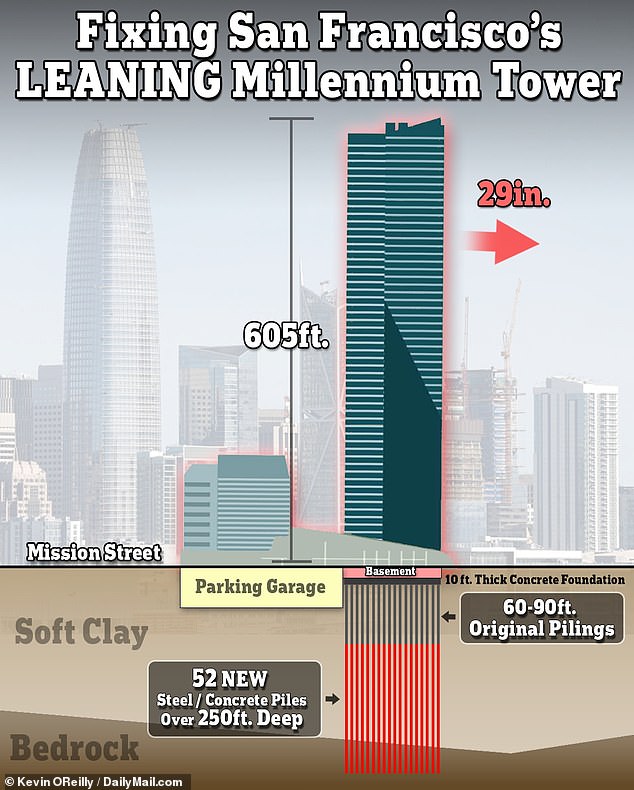
Mostafavi was just one of many residents who found a bill from the Tower Owners’ Association and asked to pay it by October 1.
He told the Bay Area store that this could be the final nail in the coffin for him.
‘I don’t know what to do with this place because it’s expensive. I can’t live there,” Mostafavi said.
The San Francisco resident had already moved in June after a plumbing problem in his sink, which some engineers warned could happen as a result of the tilt.
At the time he received the bill, he was already trying to figure out who would have to pay to clean up the sewage mess in his place.
He also told NBC that he would have had to dip into all his retirement savings to cover the costs of the kitchen problems.
“It’s really hard for me to see how I can retire – how I can leave this apartment and start my retirement,” Mostafavi said. It’s very expensive.’
“They keep asking for more money and this is not acceptable to me,” he said.
DailyMail.com reached out to management for comment but did not receive a response by time of publication.
According to Harry Poulos, an expert on tall buildings, efforts to prevent the building from sinking were successful, but the tilt has not yet been resolved.
“Their objective to correct that tilt to a significant extent – I fear that expectations have not been met,” Poulos told NBC in September.

“I don’t know what to do with this place because it’s expensive – I can’t live there,” Mehrdad Mostafavi, owner of a third-floor apartment, said in an interview with NBC Bay Area.
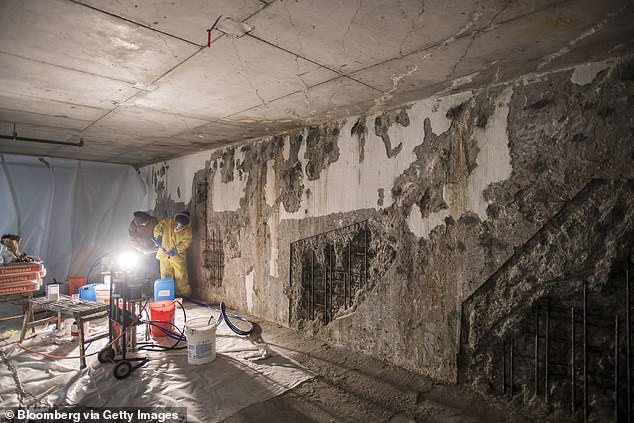
Workers repair crumbling walls caused by leaking water in the garage of San Francisco’s Millennium Tower
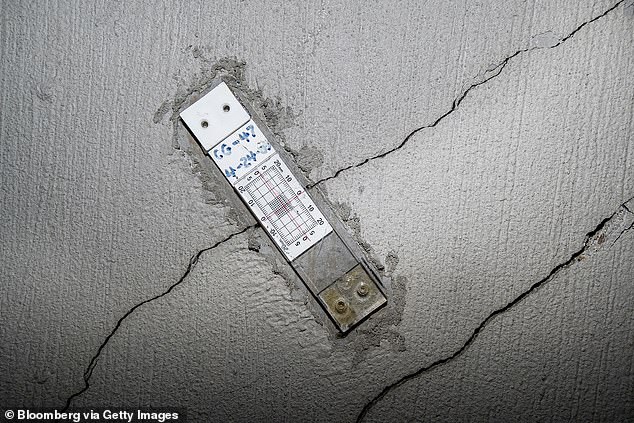
A strain gauge can be seen on a wall with floor-to-ceiling cracks in the Millennium Tower parking garage
In total, the building’s residents have been saddled with $6.8 million of the roughly $20 million extra that the project ultimately cost over the original budget.
It was originally calculated to cost approximately $100 million.
However, during construction, the tower experienced increased sinking and leaning.
Along with the bills sent to homeowners, the Tower Home Owners Association included a letter stating that residents will be compensated for lost property values.
In total, the association was awarded $150 million to pay for securing the high-rise, paying legal bills, restoring reserves and paying other expected costs.
In the end, it cost more than that, the association said.
“The delays and increased demands from the city resulted in significant unforeseen increases in project costs,” the association’s letter to residents said.
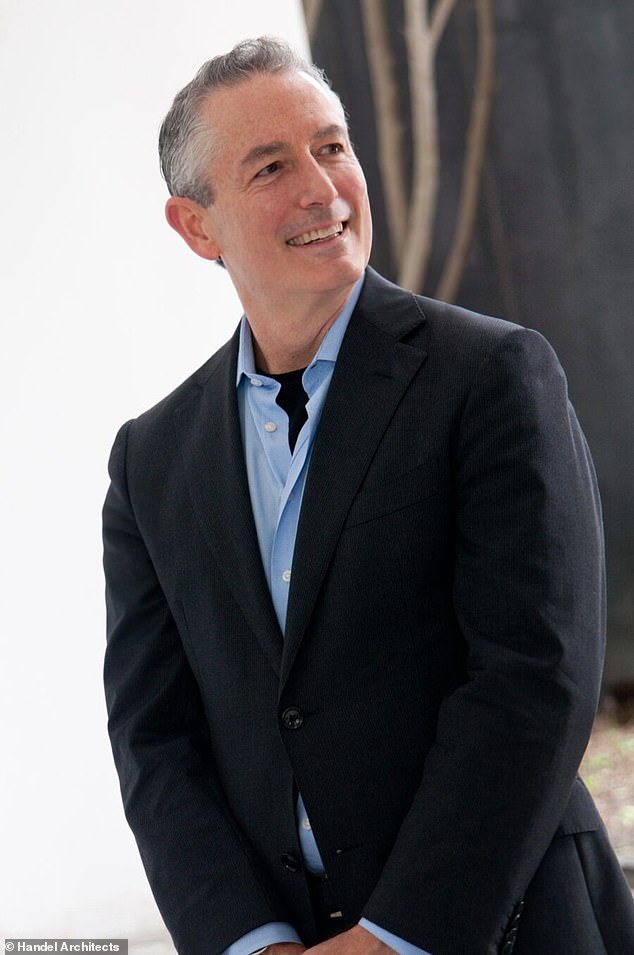
The Millennium Tower was designed by Gary Handel and Handel Architects
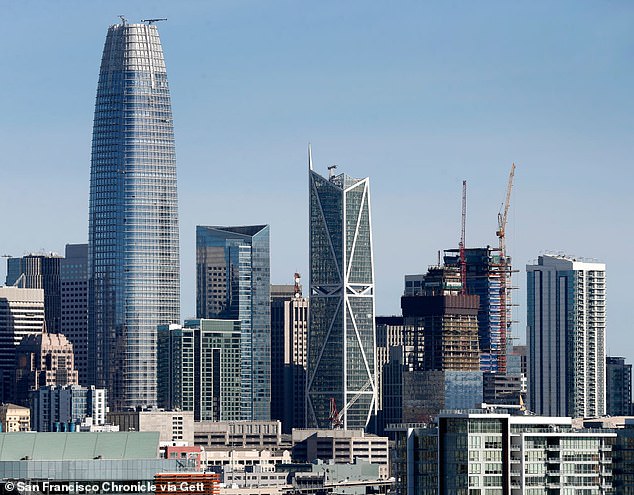
By 2016, the building (to the right of the tallest building) had sunk almost five feet into the soft ground and landfill on which it was built. Residents of the building subsequently sued the developer and designers
Earlier this year, the project’s chief engineer, Ron Hamburger, said NBC Data from roof slope measurements are sensitive to weather fluctuations.
He said that too and that the data on the building’s foundation was more reliable.
That data indicated that the tilt was greater than previously noted, but only about a quarter of an inch.
Hamburger claimed at the time that the number was “negligible.”
“We are confident that following the transfer of the remaining design load on the piles, there will be no further movement of the roof to the west,” Hamburger said.
The 58-story luxury tower opened in 2009 and quickly sold out its 419 apartments, which included former San Francisco 49er Joe Montana and former Giants outfielder Hunter Pence.
By 2016, the building had sunk nearly five feet into the soft ground and landfill on which it was built in San Francisco’s financial district.
It also leaned, creating a 2-inch tilt at the base and a 6-inch slope at the top. Residents of the building subsequently sued the developer and designers.
A confidential settlement reached several years ago included $100 million to install 52 140,000-pound concrete piles to anchor the building to bedrock 250 feet underground, with the idea that the piles would provide foundational support at the leaning, sinking tower.
